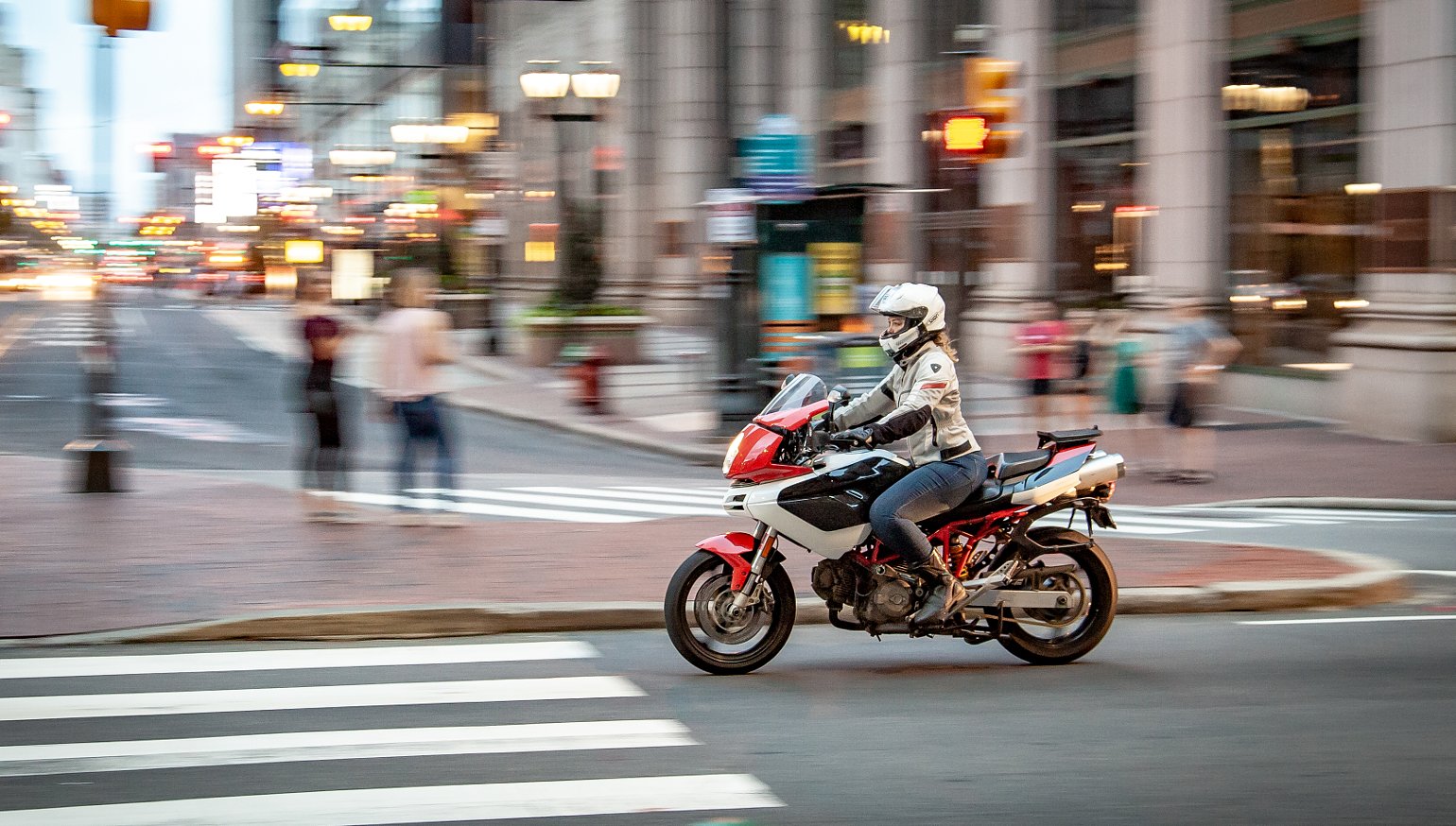Every time gas prices go up, there’s talk about motorcycles getting more popular. But do you really save money by switching from a car to a motorcycle? As we discussed in depth in a recent Highside/Lowside podcast, it’s complicated.
Total transportation costs, when you compare driving a car or truck to riding your motorcycle, have to include many factors beyond the price of gasoline, including required maintenance, tires, insurance and maybe even additional gear you’ll need if riding more often means being prepared for a broader range of conditions. It’s not as easy as comparing miles per gallon.
As someone whose daily driver is a 2013 Toyota Tacoma that gets 17 miles per gallon on a good day with a stiff breeze from behind, like many of you I find myself relying more on the motorcycles in my garage to save a few bucks as gas now averages around $5 per gallon nationally in the United States. I’ve even begun trying to figure out a way to strap a guitar to the bike to make the 120-mile round trip to my weekly lessons.
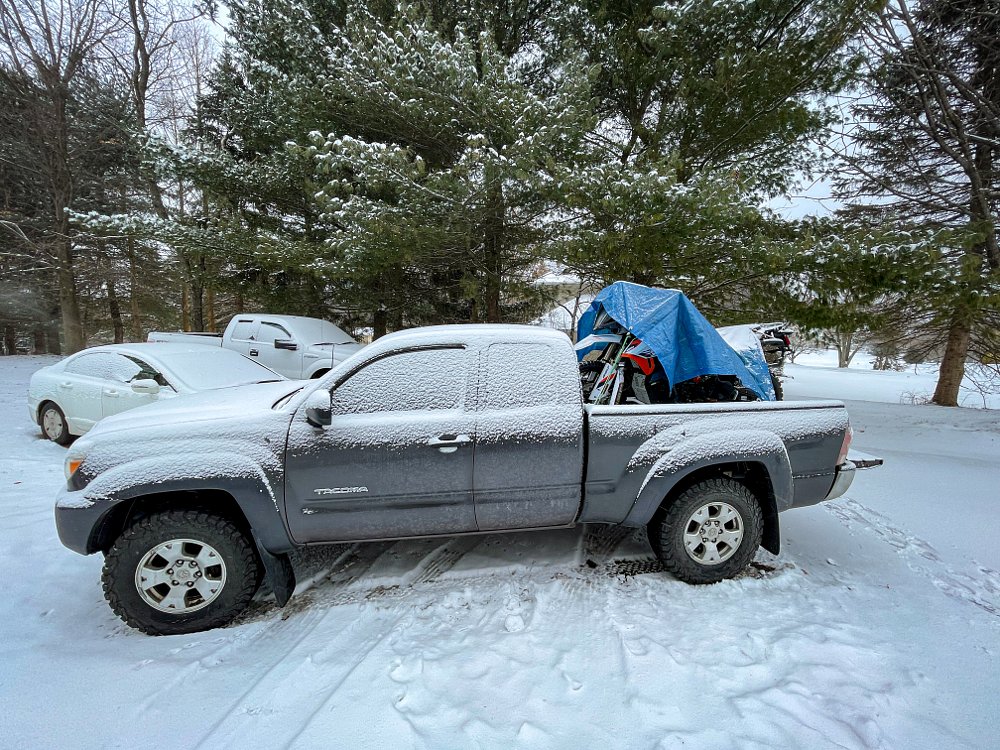
My newly acquired 2021 KTM 890 Adventure R Rally (the “Toyota Tacoma'' of motorcycles, as Zack Courts so kindly put it) goes nearly three times as far on a gallon of gas than Tami the Tacoma (roughly 47 mpg for the KTM). And while Tami borders on the extreme of poor mileage (although not quite as bad as the 1985 Oldsmobile Delta 88 I had in college), I think it’s safe to agree that, on average, motorcycles are more fuel-efficient than automobiles.
But does that make it cheaper to ride my motorcycle instead of driving my truck? Truth is, over the long term, with all of the associated costs, probably not. I’ll look at those numbers more a little later, but first let’s take a look at four ways you can help tilt the odds in favor of riding and save some money to offset some of the higher costs you’re paying for gas these days.

Tires part one: How long will motorcycle tires last?
One thing that experienced riders always mention and new riders often overlook when comparing costs is tires. Even though cars have four and motorcycles have two, the fact that car and light truck tires last so much longer means that you’ll spend more to keep tires on the motorcycle over the long haul.
To give an example from my garage, Tami just received a new set of BFGoodrich ALL-TERRAIN T/A KO2 tires that cost me roughly $1,000, including installation. If the last set is any indication, I’m expecting these tires to last me 90,000 miles. I would need roughly 26 sets of the Continental TKC 80s (averaging 3,500 miles) on my KTM to ride the same distance as one set of Tami’s BFGoodrich tires. That would set me back nearly $15,000 (installed at a shop, averaging $370 for the cost of tires, and $200 for installation if I were just to drop the bike off).
I can improve those numbers, however, by my tire choices. I’m currently sacrificing tire longevity to gain some off-road performance, which is common with 50/50 ADV tires, but there are options like the Mitas E-07s that still do well in varying off-road riding situations while returning superior mileage, thus cutting down the overall cost. I have been able to get 7,000 miles on a set of Mitas E-07s, which would save me $8,240 over those 90,000 miles of riding.

The Mitas E-07s aren’t a good option for ADV riders tackling mud and sand, but most riders don’t. And those who never leave pavement can get even more longevity from sport-touring or touring street tires.
Our own Ari Henning has already made the case for sport-touring tires, but I want to reiterate his point here. Our in-house product expert Patrick McHugh recently swapped out a set of Michelin Road 4 tires on his Triumph Street Triple Rx for a new set of Road 6s, but not before getting nearly 18,000 miles out of the set. Given the claims of the new Road 6s, I expect he could see 20,000 miles from his new skins.
The cost for a set of new Road 6s was $462, which sounds expensive compared to a pair of Dunlop Sportmax GPR300 for example (our pick for best bargain tires of 2022). The same sized set of Dunlops for his Triumph would have only set him back $180. At first glance the Dunlops seem like the smart option for saving money, but the average mileage for a set GPR300 tires seems to be between 2,700 and 7,000 miles, based on customer reports as well as our own Ari Henning, who used one on his Kawasaki Versys 650 for touring and only managed 2,700 miles out of a rear. So it would take three or four sets (at best) of GPR300s to reach the mileage of one set of Road 6 tires in Pat’s scenario.
Tires part two: How to save money on motorcycle tire installation
When I talked about tire costs above, I assumed the rider is dropping off the bike at a local shop to have the tires changed. Having worked in a small auto service shop in college, I can tell you from experience that on average a mechanic can change a set of four car tires faster than two motorcycle tires, when factoring installation into the equation, and the owner pays accordingly.
I called some local shops and the average consensus was it would cost about $200 to have a set of tires installed on my KTM 890 if I were to drop the bike off and leave it with the shop for the day. For riders with large touring bikes and cruisers with hard-to-access rear tires, the cost can easily double. The cost drops drastically, however, if I remove the wheels myself and just take them to the shop to have the tires swapped.
If you have never tackled a wheel removal on a motorcycle before, it’s relatively straightforward, but the methods to lift a bike off the ground do vary a bit depending on the type of bike you ride. So to help walk you through the process, we made the “How to Remove a Motorcycle Wheel” series with separate videos for sport bikes, adventure bikes, cruisers, and dirt bikes.
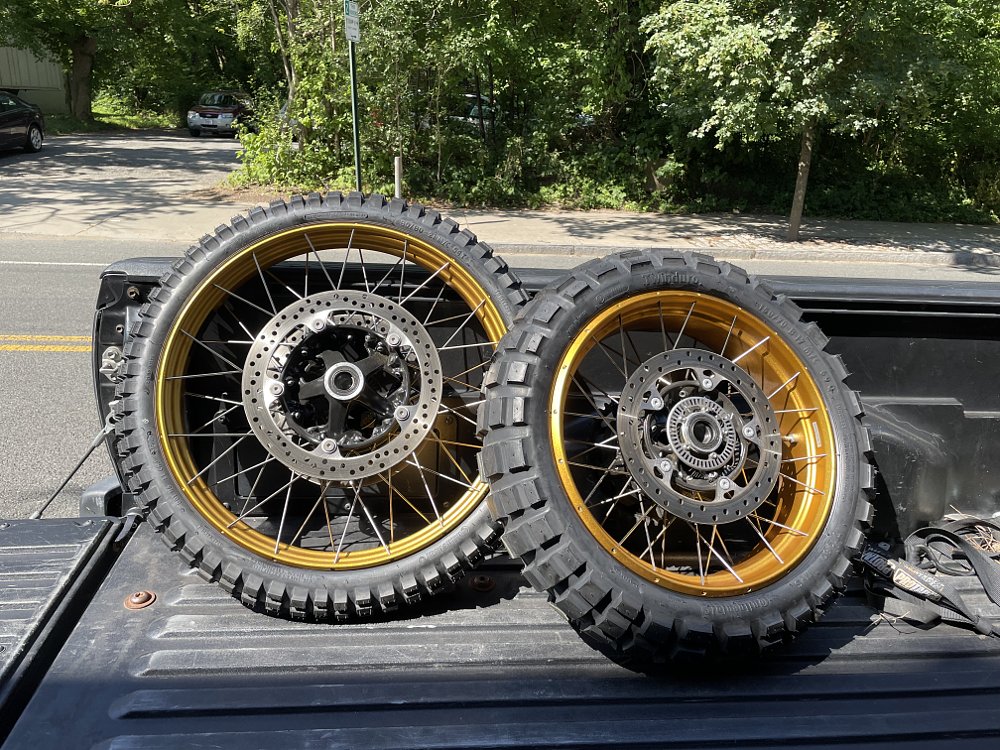
Even if you spend a few dollars on tools the first time, you’ll save money. The same shop that was going to charge me $200 for a bike drop-off only wanted $50 if I brought them the wheels, and they were able to swap the tires while I waited. But the first place to check is your local Cycle Gear. Most locations offer tire mounting and balancing for just $20 to $25 per tire.
Of course the next step in saving money is to change the tires yourself and we have a how-to article on that, too. Again, you’ll have to buy a few tools, but they’ll pay for themselves with the money you save from the first set of tires. And you can do the job on your schedule, instead of having to drop off the bike at a shop and leave it. Personally, I don’t mind removing the wheels but I leave the tire changing to the professionals (at least on my street bikes). Other members of the Common Tread team do their own tire changes at home, however, so see our how-to articles and decide which works best for you. Either way, you save money.
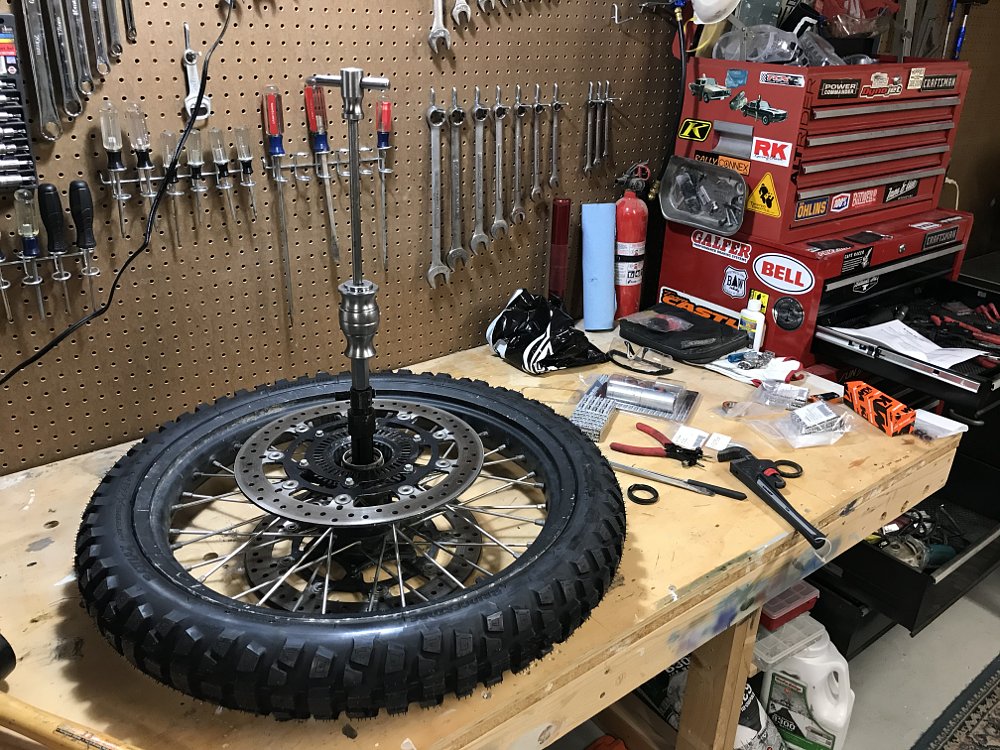
Save money with DIY motorcycle maintenance
The other hidden cost of using your motorcycle instead of a car is the higher maintenance requirements.
While I don’t have enough data on the 890 to compare against Tami’s past five years, I’ve had similar motorcycles like my KTM 1090 Adventure R and Triumph Tiger 800 XCx, both of which I owned long enough that I performed a wide variety of regular maintenance tasks.
Tami costs me roughly $700 per year in oil changes and differential/transfer case flushes every 15,000 miles. Considering my previous bikes, the 1090 Adventure and the Tiger, traveling the same annual distance of 15,000 miles would have cost me about $1,550 in maintenance, on average, per year (not including tires).
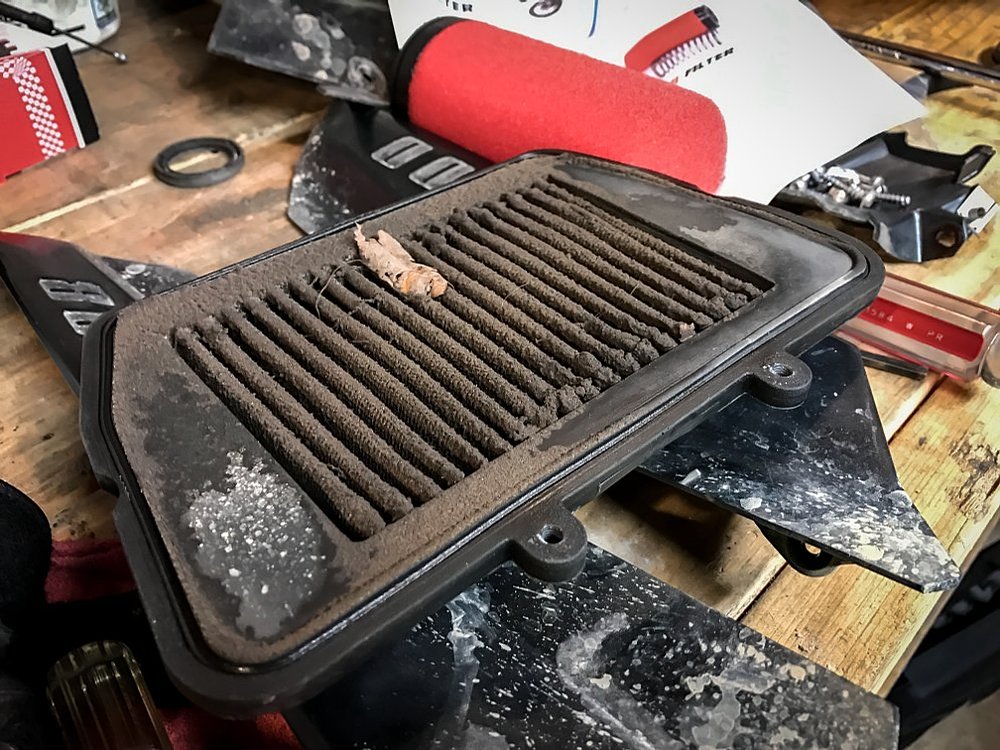
There are some jobs I still leave to the professionals (valve checks on modern overhead cam engines and suspension services on high-end Austrian suspenders), but most riders can save hundreds of dollars a year by performing their own basic motorcycle maintenance.
I’m no Ari Henning or Patrick Garvin, who tear apart engines with enjoyment and ease, but if a simpleton like me can do some of this stuff, chances are, so can you. Especially with the help of “The Shop Manual” and “Weekend Wrenching,” the video series those two guys produce to help guide you through the basics.
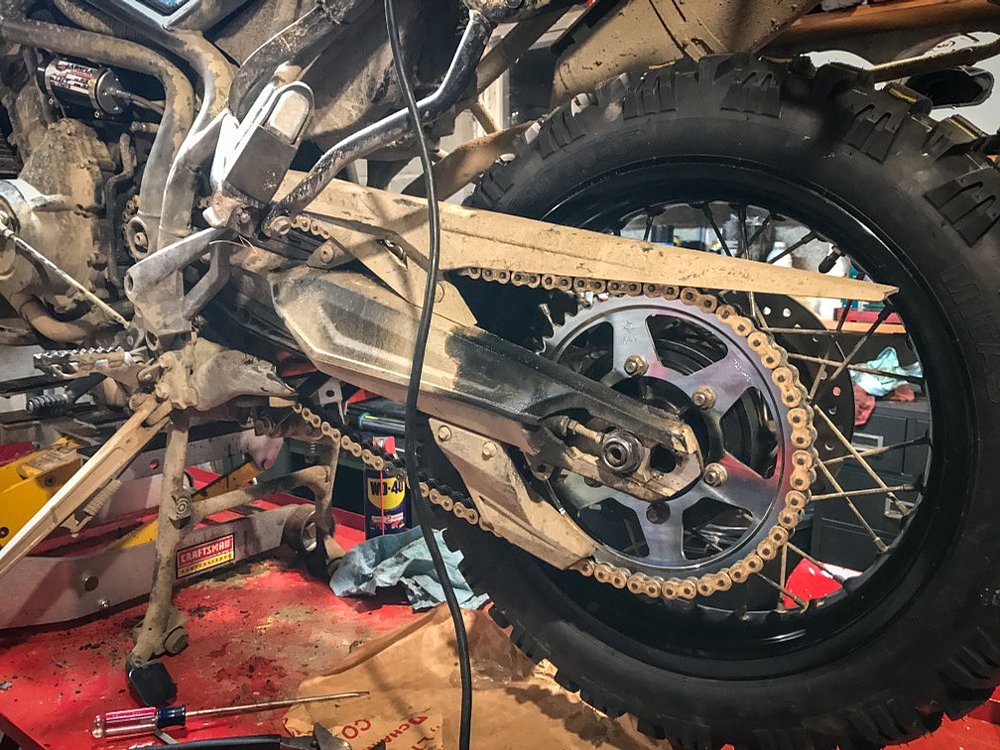
Examples of simple jobs you can do yourself and save money include changing engine oil and replacing brake pads. Other jobs will not only save you a trip to the shop and a bill, but will also help you get the maximum mileage out of each expensive gallon of gas.
- Checking and adjusting tire pressure will not only improve your motorcycle’s handling and safety, but will also get you the most mileage, both in fuel and tire longevity.
- A dirty air filter makes it harder for your bike’s engine to breathe and reduces fuel efficiency. While some air filters are a pain in the tank to change (my Tiger 800 was infamous), most are easily accessible and swapping to a reusable filter not only reduces waste over time, but can also provide better filtration, if properly maintained.
- A dirty or worn out spark plug may not completely ignite all of the fuel in the combustion chamber, reducing your fuel economy. Change them based on the recommended intervals in your owner's manual.
- The chain, sprockets, and wheel bearings (and gears in shaft drives) are all items that cause friction as power travels from your engine’s crank to the rear tire. Cleaning, lubing and adjusting your chain or changing the oil in your final drive maximizes longevity and fuel mileage.

Small displacement engines yield better motorcycle MPGs
It’s a running joke about the die-hard motorcyclist trying to convince a skeptical significant other that purchasing one more motorcycle is a great idea because “Honey, think how much money I’ll save on gas!” Unfortunately, the motorcycle most of us lust for doesn’t really save money.
While I’ve been talking about riding the bike I have, a fairly expensive adventure-touring motorcycle, it is possible to save more money by going small and cheap, just like riders around most of the world do. Our own editor, Lance “Frugal Pants” Oliver, loves to regale me with the story about how he bought a used 250 cc dual-sport on the cheap, commuted on it for several years, then sold it for half what he paid.
In today’s used bike market, it’s hard to find such a deal, but if you buy a small, used motorcycle, you can save money. As Lance tells it, his commuter got 75 miles per gallon, rolled on cheap tires, cost $28 a year to insure, was easy to maintain and he didn’t mind riding it to work on winter days when the salt was thick on the road because it already looked like crap.
It’s not an approach everyone will want to take, but there is something liberating about having a beater to ride when you don’t feel like taking your nice motorcycle out in the slush and slime, just to get to work.

Conclusion: An honest look at motorcycle costs
At first glance, I can understand why a lot of people assume that rising gas prices could equate to an uptick in motorcycle sales as people search for the most efficient transportation possible. As we’ve seen, there’s a lot more to consider than just gas prices if you want to do an honest accounting, however.
Driving 90,000 miles in Tami the Tacoma would cost me nearly $27,000 in gas at current prices. Riding the KTM 890 the same distance, I would spend about $11,500 for gasoline, even though Tami happily drinks 87 octane and the KTM prefers top-shelf 91. But the additional maintenance and the roughly 26 sets of Continental TKC 80s I would run through in those 90,000 miles would offset any fuel savings.
Of course, almost nobody in the United States rides a motorcycle based on cold, hard accounting. I like riding motorcycles regardless of whether they make the most financial sense and I’m sure most people reading this feel the same.
Since it’s something we want to do, it makes sense for us to do the things within our power to make motorcycling more affordable in an era of inflation and skyrocketing prices at the pump. We can do that by taking on a little of our own maintenance and maybe thinking a little differently about things like tires.
If we can manage to save a few bucks while riding, that’s only more of a reason to do so.




